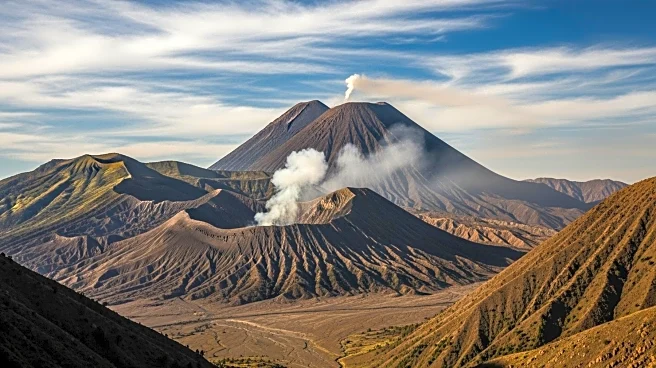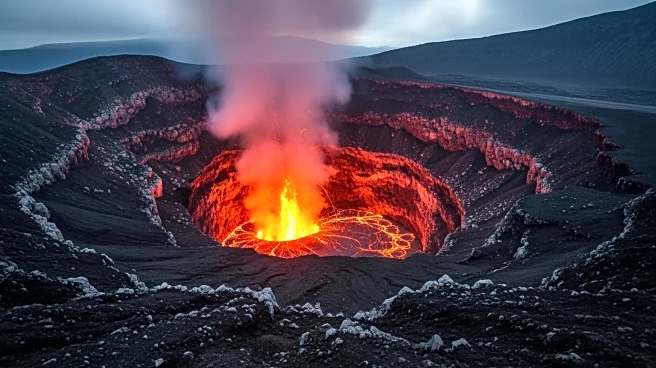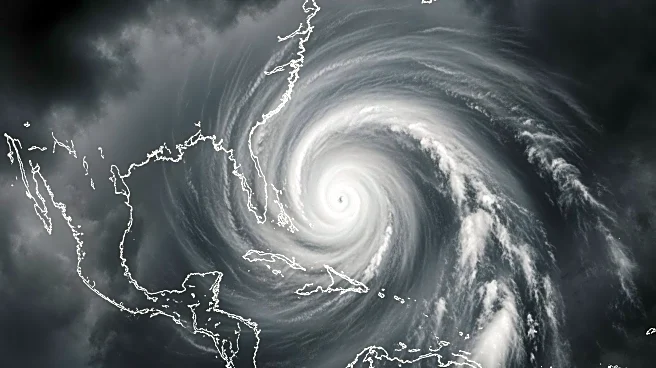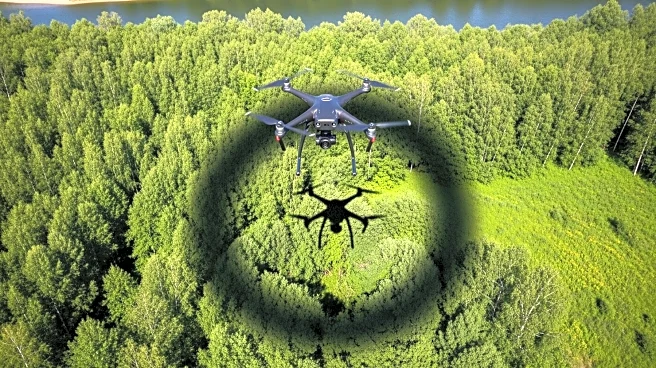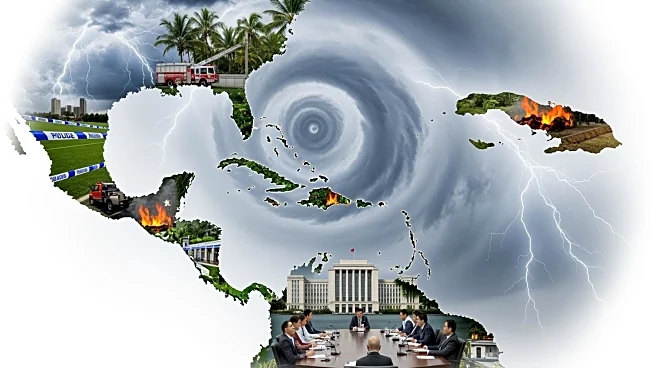What's Happening?
A volcano near the Iran-Pakistan border, dormant for over 700,000 years, has shown signs of potential activity, with a 3.5-inch uplift detected over 10 months. Research published in Geophysical Research Letters
indicates pressure building beneath the Taftan mountain's summit, possibly due to changes in the hydrothermal system or magma movement. Local reports of sulfurous fumes and odors detected up to 30 miles away have raised concerns. Volcanologist Pablo González emphasized the need for closer monitoring, although there is no immediate threat of eruption.
Why It's Important?
The potential reactivation of a long-dormant volcano poses significant risks to nearby communities and infrastructure. An eruption could lead to environmental and economic impacts, affecting air travel, agriculture, and local populations. The situation underscores the importance of geological monitoring and preparedness in regions with volcanic activity. Understanding the signs of volcanic unrest can help mitigate risks and inform emergency response strategies, highlighting the need for investment in scientific research and technology to predict and manage natural disasters.
What's Next?
Scientists and local authorities are likely to increase monitoring efforts to track changes in the volcano's activity. This may involve deploying additional sensors and satellite technology to gather data on ground deformation and gas emissions. Emergency preparedness plans may be reviewed and updated to ensure readiness in case of an eruption. Collaboration between regional governments and international scientific communities could enhance the understanding of volcanic behavior and improve response strategies.
Beyond the Headlines
The potential eruption of a dormant volcano raises broader questions about the impact of climate change on geological phenomena. Changes in temperature and precipitation patterns could influence volcanic activity, necessitating further research into the interconnectedness of climate and geology. Additionally, the cultural significance of the Taftan mountain to local communities may shape responses to the threat, highlighting the need for culturally sensitive approaches to disaster management.
